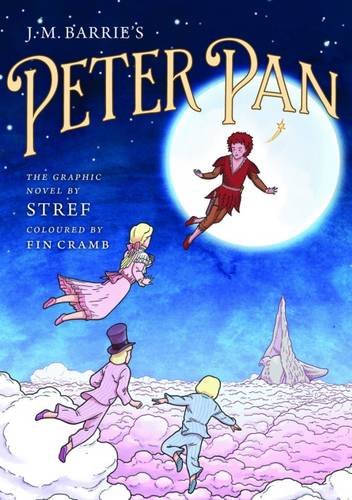
Artist Stephen White, who works under the pen-name Stref, has just had his graphic novel adaptation of Peter Pan, JM Barrie’s 1904 play and 1911 novel, released by Birlinn Books. This is, remarkably, the first official graphic novel of one of the most famous and beloved children’s books.
Stephen has worked on many DC Thomson properties over the years, including The Dandy, The Beano, The Broons and Oor Wullie, while his first graphic novel, the anthology MILK, was published in 2009 (and updated to MILK+ in 2012) and was followed by the humorous newspaper strip style Raising Amy in 2011. He has also illustrated The Tattoo Fox series of books written by Alasdair Hutton which are set around the Royal Edinburgh Military Tattoo.
downthetubes’ Jeremy Briggs talked to Stephen about his adaptation.
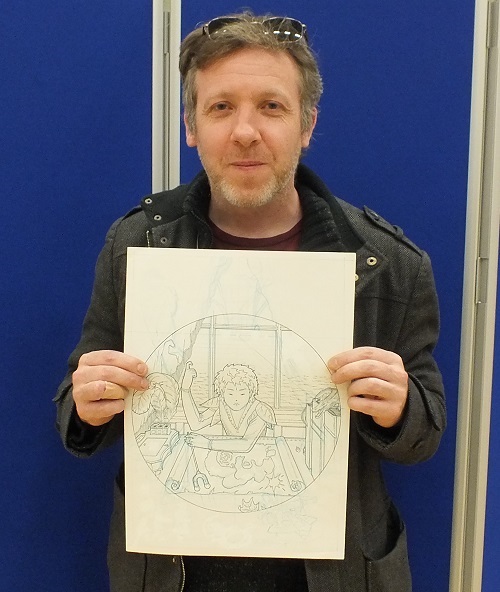
downthetubes: Peter Pan is such a familiar story due to the Disney film and other adaptations that most people think that they know the story well despite having never read JM Barrie’s original Peter and Wendy novel. When and how did you first come across the book and what has it meant to you over the years?
Stephen White: Peter Pan first came into my life when I was aged three. My mother had taken me to the King’s Theatre (in Edinburgh) to see a performance, but just before Peter made his appearance, the fire curtain came down, the fire alarm went off, and the building was evacuated. I never got to see Peter. This is my oldest /first memory.
Instead of seeing Peter, I became him, donning a pair of green tights, running around with a tube of glitter, calling our dog Nana (he was really called Whisky) and trying to get out the window to fly away at every given opportunity, to the extent that my mother had my uncle put bars on it. This is not uncommon, when the play was first performed it was written that you only needed lovely, wonderful thoughts to lift you into the air. After many children suffered injuries jumping from their beds trying to fly, it was added to the play, that no one can fly unless the fairy dust has been blown on them, not something children can easily get their hands on!
After attending an event featuring comics legend, Alan Grant, I was lucky enough to have a word with the man, and present him with a sample disc of work (featuring my then unpublished work in progress, MILK, which Alan was kind enough to supply a cover blurb for when it that project actually found a publisher). Not really expecting to hear from him, I was surprised and delighted when a very nice e-mail arrived from him in my inbox. Alan commented that I work in many styles and pointed out that I could work in various fields of illustration, but more importantly, he asked the question – what was it that I really wanted to do?
There was only one answer to that, if I had my choice, I would do a Peter Pan graphic novel. One that was as faithful to J M Barrie’s original vision as possible. Anyone who has read the novel will know that Barrie has the most beautiful way with words, and I felt that the lovely prose, wit and whimsy was lost in many adaptations of Barrie’s work.
It is important to mention the Disney movie, as that is the version that most people are familiar with. However Barrie’s work, is a far darker, multi-layered and uncompromising tale than the sing-a-long Disneyfied version of it.
If you haven’t read Barrie’s book, you do not really know Peter Pan.
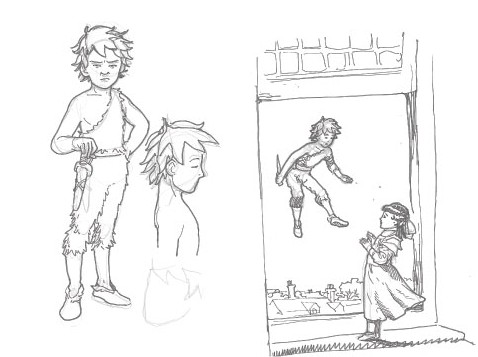
DTT: We originally featured your aim to publish this graphic novel yourself as a crowd funded project back in 2012 which, like so many crowd funding projects, never reached its goal. How did you move on from this and how did Birlinn become involved in the project?
Stephen: I’ve been working on this adaptation on and off over a period of six years. To get the project off the ground I did try crowd funding, but as a virtually unknown artist it can be difficult to reach your target. I’ve been a professional illustrator since the age of 16, so I am very used to rejection, in fact I have a pile of rejection letters collected over the years that stands almost as tall as I am! If I have learned one thing in all this time, it is never to give up. Birlinn became involved in the project after their Creative Director, Jim Hutcheson, attended an Oor Wullie/The Broons event that I was involved with – funnily enough it was in the same room at the National Library of Scotland where I had attended Alan Grant’s event five years before. I had many concept sketches from the project, and a script, and Jim spent some time talking to me about it and asked if I would come along to the office to talk about it some more… the rest, as they say is history.
I used to run a social networking night for creative types once a month in an Edinburgh pub with John McShane. It was at one of these meetings that I met Fin Cramb, and had a look at his portfolio. It only took a glance for me to see that what Fin was doing with colour was what I needed for an authentic looking colour finish to the project. I usually colour my own work, but Fin has a painterly way with colour and texture that is beyond me.
I asked him if he would come on board with Peter Pan then and there, thankfully he was interested!

DTT: JM Barrie donated the copyright of Peter Pan to the Great Ormond Street Hospital (GOSH) in London in the 1920s and while other works of a similar age are now out of copyright in the UK, Peter Pan was made a special case by parliament so that GOSH retains the copyright in perpetuity. How did you approach GOSH initially about the project and how much involvement did representatives of the hospital have in the final version?
Stephen: When I decided that Peter Pan was the project I would most like to work on, I wasn’t sure about the copyright, after all Peter is one of the most famous characters in children’s literature. I knew GOSH had certain rights to the character, so I got in touch to ask if doing the book was even a possibility.
The person I spoke to was Christine De Poortere, who is the Peter Pan Director at Great Ormond Street Hospital Children’s Charity, and the Peter Pan and J M Barrie expert! Yes! It turns out that I could go ahead with the project, and better still, the hospital would actually benefit financially from it. I started work immediately, re-reading the book several times, and adapting it into a graphic novel script chapter by chapter, running it by Christine as I went. Christine also encouraged me to look into J M Barrie’s life, and how it relates to the book, which added extra dimensions to the project I had originally had in mind.
The more you know about J M Barrie, the more you will understand what Peter Pan is actually about.
I have included Christine in every aspect of this project, and am so thankful for all her knowledge, support and advice over the years.
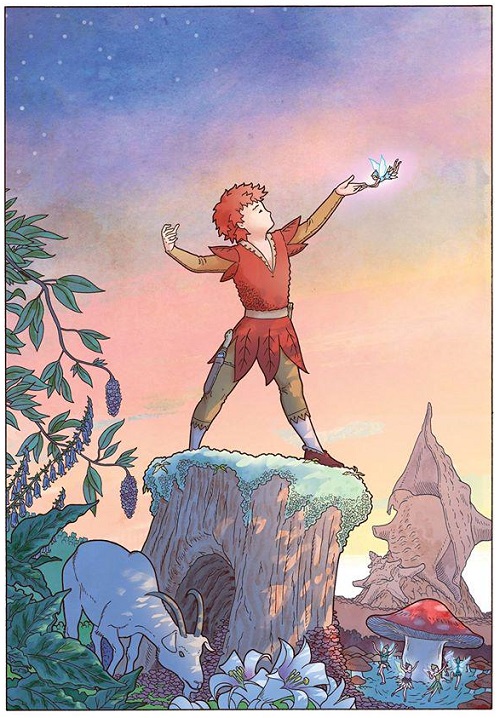
DTT: You have adapted Barrie’s original novel into 96 pages of artwork. How much of the original text novel is in the graphic novel and as a writer were there any particular plot sections or characters that you had to lose either due to lack of space or the complexity of the original story?
Stephen: I’ve kept the adaptation as faithful as possible, as there are so many other adaptations out there, I wanted this book to be as close to Barrie’s as I could possibly make it. Sacrifices have to be made, however, such is the nature of adapting a work from one medium into another. I can say that all the text and dialogue in my adaptation is taken straight from the book, these are Barrie’s words not mine. There are a few instances where some words were dropped from sentences, some prose becomes dialogue and vice versa, and some scenes/characters are altered or dropped entirely.
All these decisions are made for the sake of the book’s pacing and readability, especially for children, in this format. For instance when Hook leaves Peter for dead on Marooner’s rock after twice clawing him; in Barrie’s original, Wendy is also stranded on the rock and escapes after Peter ties the string of a kite around her. To move the story along, I had Wendy leave the lagoon with the Lost Boys to have Peter left on the rock by himself. It’s a more powerful, solitary image and moves the story along a little quicker, also there is no foreshadowing of the kite, so it was an easy thing to cut.
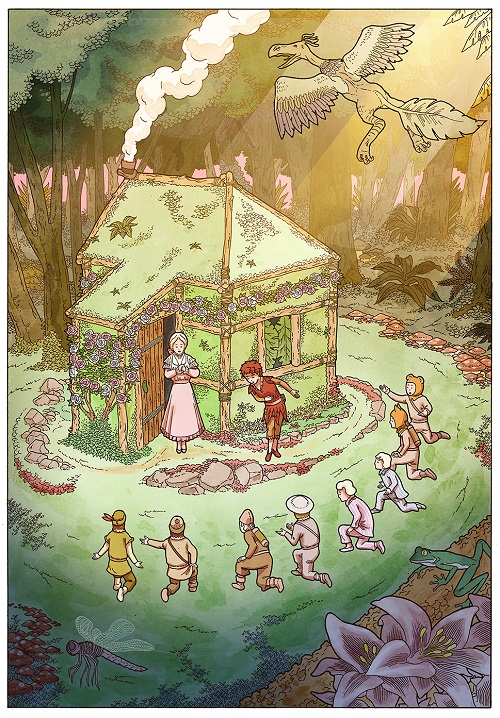
DTT: You were at the Wonderlands Graphic Novel Expo in Northumberland University in June where you talked about the book and showed off your original art boards. How important to you as an artist was it to create this book in the ‘traditional’ manner of pen and ink on board rather than on a computer screen?
Stephen: After some discussion with Morris Heggie, my editor at D C Thomson, it was decided that the best way to approach the project would be to draw it in a very traditional style. Something that could look classic, timeless and would not go out of style, it could contain both the charm and the darkness required. It seemed only fitting that I should draw the book in a tradition way to match this, so the original pages are as they appear in the finished book. There is absolutely no computer manipulation in the line drawings at all. This did lead to the use of a lot of Tipex, cutting and pasting of patches, indeed some pages are so layered with these that they are practically 3D! Normally I would scan artwork and tweak it on the computer, but it just didn’t feel befitting to this project to do that.
After the drawings are done, Fin scans them, and the finished colours are done on the computer, with hand textures added that Fin does on separate sheets, and scans also.

DTT: You have introduced a specifically Scottish flavour to the book by using various locations that Barrie lived at or would have recognised. Tell us about the real locations you have incorporated into the book and how much research into them did you do?
Stephen: As I said, the more you know about Barrie, the greater your understanding of Pan. I am very thankful that I never reached my crowd funding goal, as I would not have had the time to do as much research as I did in the end. Obviously as a Scotsman, Barrie was inspired by certain places where he grew up, and I wanted to include those in the book as much as possible.
Thanks to The National Trust of Scotland I had a lovely visit to Barrie’s home in Kirriemuir, the house was opened for me, and I had a photographer cover it extensively. Most of the objects you will see in the nursery scenes are actual things from Barrie’s house, and even the post box that the children walk past on page two, is the box Barrie used in Kirriemuir when sending off his first works. The Wendy house is based on the wash house that stands outside his birthplace, this is where Barrie would perform plays he wrote as a child, and was his inspiration for the Wendy house. In the house there is also the bench/seat that Barrie used to sit in and write. On the bench are ink sketches that might have been made by Barrie himself, or I suspect by Michael Llewellyn Davies, one of the five boys that played such a massive part in the story of Peter Pan. You will see these sketches, along with other visual references to the book in the stencils that surround the nursery. The scene where Tiger Lily and the Redskins bestow upon Peter the honour of Great White Father (the original working title) takes place in front of a waterfall that can be found in the nearby park in Kirriemuir.
The Peter Pan Moat Brae Trust in Dumfries were kind enough to open the house and gardens to me to photograph. Barrie attended the nearby Academy, and played in these gardens as a youth, being the original inspiration for the Neverland. The leaves that Peter has for hair in my version are taken from a tulip tree that grows there, I took a leaf upon my visit, and it hangs in a frame on my living room wall still-a small piece of the real Neverland!
During a trip to the National Museum of Scotland, I spotted a model of a 17th century merchant ship that I thought would make the perfect pirate ship. The museum was happy to give me access to the model to photograph, and I couldn’t be more thankful, the pirate ship being the most dreaded, challenging part of the story to draw!
Many of trees you will see in the book are real trees that Barrie would have climbed and played amongst from Kirriemuir and Moat Brae House, Moat Brae House is the doll’s house in the nursery, and the doll Wendy is holding has the Great Ormond Street Hospital logo for a head. When the children fly away over London, the building they are flying over is the hospital as it appeared in 1904 when the play was written. You will also see iconic Scottish landmarks such as The Od Man of Storr, The Three Sisters, Bow Fiddle Rock and Arthur’s Seat.
These all add to the story within the story. The true story of Peter Pan. Barrie’s story.
DTT: Stephen, thank-you for taking the time to talk to us.
• There are more details of JM Barrie’s Peter Pan: The Graphic Novel on the Birlinn website
• There are more details of Stephen White’s work on Peter Pan: The Graphic Novel on his Pan by Stref Facebook page
• Stephen has been interviewed about Peter Pan: The Graphic Novel by the Dundee Courier and The Scotsman newspapers
• Stephen will be talking about Peter Pan: The Graphic Novel and signing the book at the Great Ormond Street Hospital in July, the Edinburgh International Book Festival in August, and both the Portobello Book Festival and the Lakes International Comic Art Festival in October. There are more details of all these events here
• An exhibition of original preliminary artwork as well as prints from the book is currently open at the Doubtfire Gallery in Edinburgh which runs through to Saturday 25 July. There are more details, including opening times, at the Doubtfire Gallery website
News, reviews, interviews and features for print and on-line: Spaceship Away (since October 2005), Bear Alley (since February 2007), downthetubes (since June 2007), and Eagle Times (since October 2008). Plus DC Thomson’s The Art Of Ian Kennedy, Titan’s Dan Dare and Johnny Red reprints, Ilex’s War Comics: A Graphic History and 500 Essential Graphic Novels, and Print Media’s The Iron Moon and Strip magazine.
Categories: British Comics, Comic Creator Interviews, downthetubes Comics News, Featured News, Features
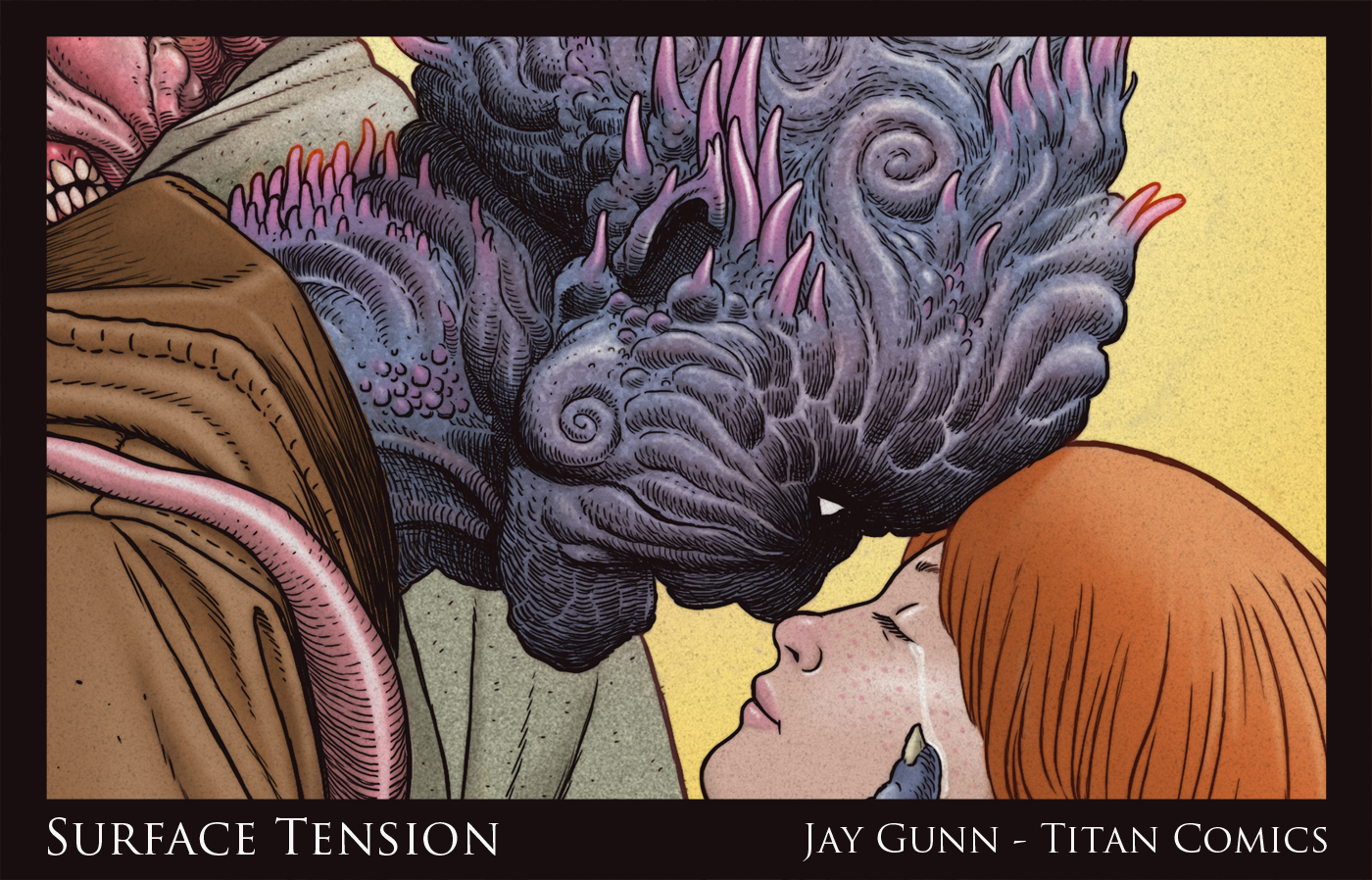 Breaking Surface: An Interview with Jay Gunn, creator of “Surface Tension”
Breaking Surface: An Interview with Jay Gunn, creator of “Surface Tension” 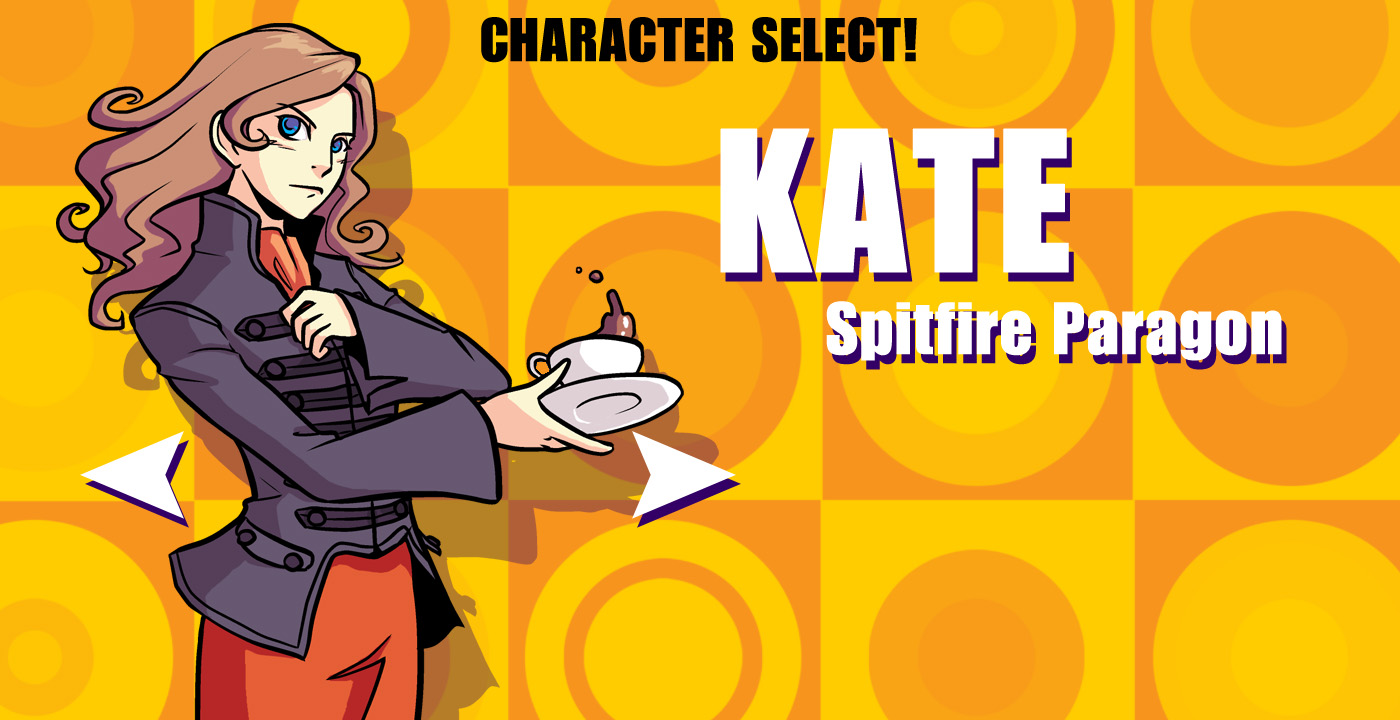 Lakes Festival Focus 2014: Manga and Games artist and designer Kate Holden
Lakes Festival Focus 2014: Manga and Games artist and designer Kate Holden 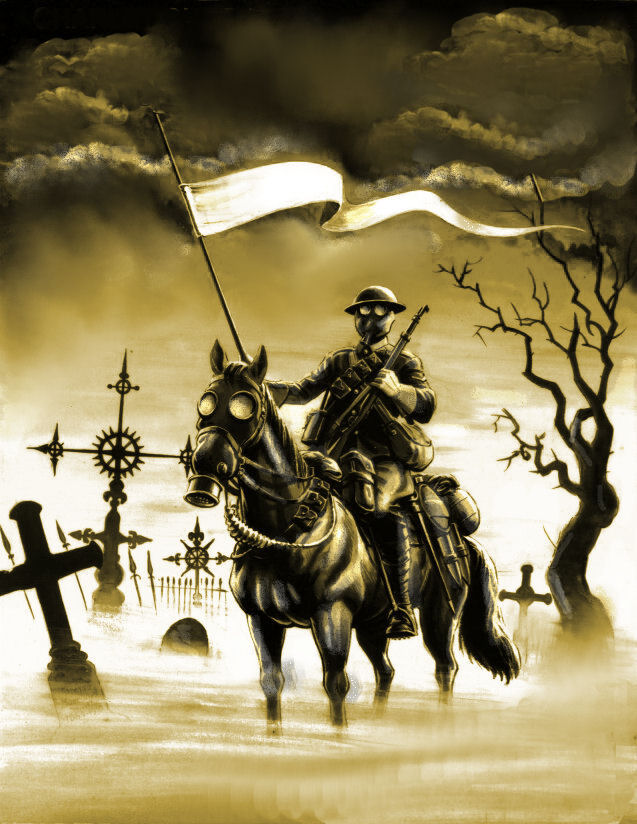 Looking back on Charley’s War: An Interview with Pat Mills
Looking back on Charley’s War: An Interview with Pat Mills